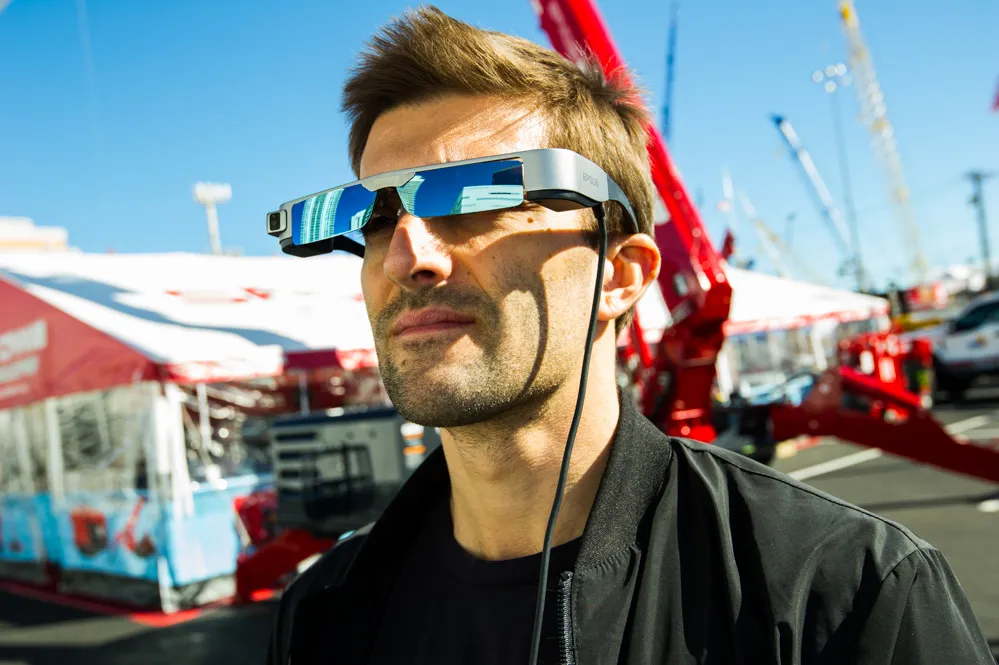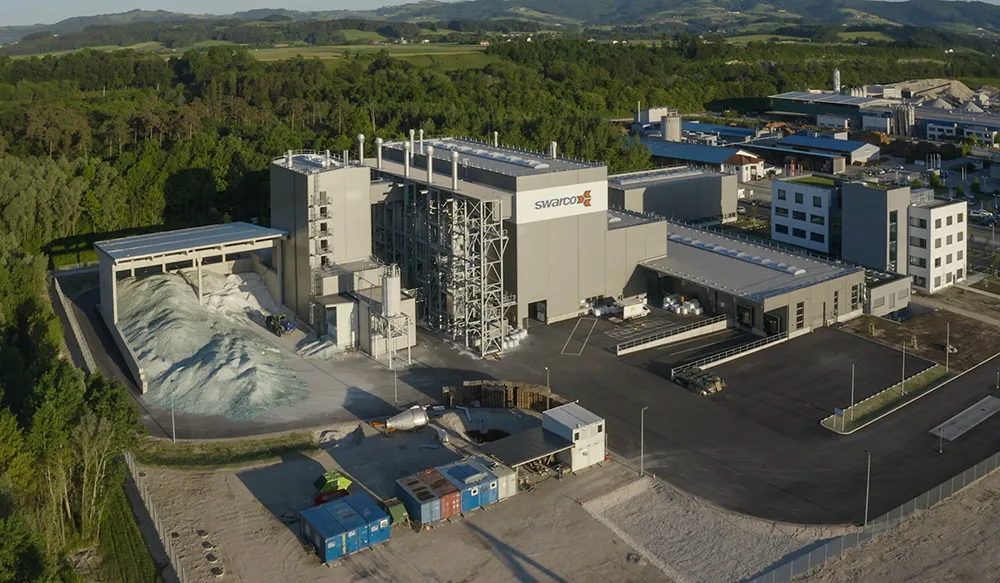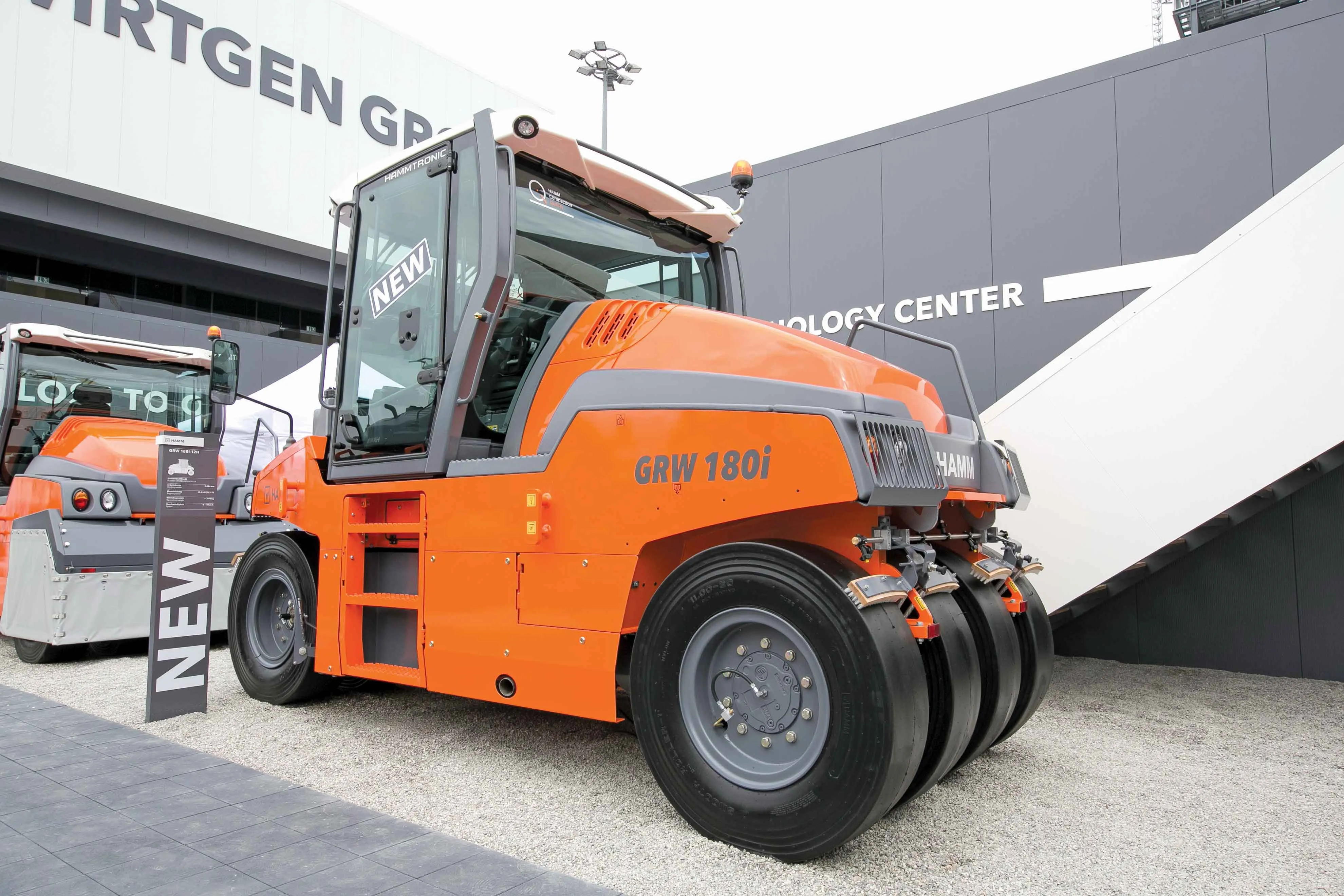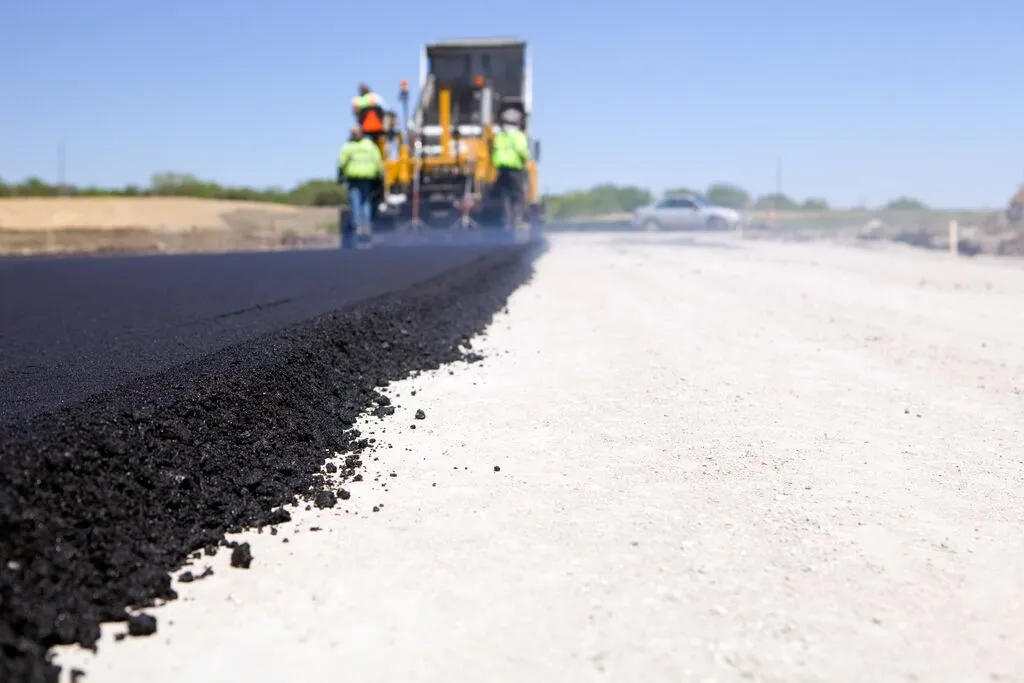
While drone pilots usually have to look down at a smart phone or tablet to view the images being taken, the Moverio BT-300 FPV Drone Edition glasses allow them to look up, seeing their surroundings as well as the drone camera image. Telematic information from the drone is also displayed on top of the image.
“You can think of it as a deconstructed tablet,” explains Anna Jen, Epson’s director of augmented reality. “The controller is the processor and runs the Android operating system. It has a touch pad like a little mouse and the screen is the lens of the glasses.”
This product is the third generation of the Moverio and weighs just 69g (2.5oz), a 20% weight reduction on previous versions. The product also costs significantly less than competitor products at $799.
Epson will also be demonstrating another application for its smart glasses, which it has dubbed Remote Support Solutions. This version of the Moverio contains a camera in the glasses so that a technician in the field can transmit what he or she is seeing to a colleague based elsewhere. The remote technician can then write instructions on top of the image, allowing the person in the field to carry out the necessary activities.
“There are so many potential applications,” says Jen. “Augmented reality will have a bigger and bigger part to play in smart job sites.”








